 |
Earhart Project Research Bulletin
April 7, 2007
| Last Words |
Pick up almost any book about the Earhart disappearance and you’ll read that Amelia’s last words were heard at 08:43 a.m. – the time of the last in-flight message received from Amelia by the radio operators aboard the Coast Guard cutter Itasca. The time is crucial to those who speculate that the aircraft ran out of fuel immediately after that transmission because calculations pinpointing where to search the ocean bottom all begin at the plane’s supposed position at that moment. The exact time of the last call heard by Itasca is of less significance if Earhart and Noonan remained aloft, but to solve the mystery of what really happened that morning, it is important to reconstruct events as accurately as possible.
Sources
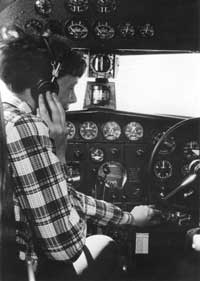 The source for the 08:43 time would at first seem to be unimpeachable: it’s
the real-time log kept by the Itasca radio operator who was responsible for
communicating with Earhart. However, as is so often the case, upon closer
inspection it becomes apparent that the answer is not that simple. The log
was clearly altered and amended.
The source for the 08:43 time would at first seem to be unimpeachable: it’s
the real-time log kept by the Itasca radio operator who was responsible for
communicating with Earhart. However, as is so often the case, upon closer
inspection it becomes apparent that the answer is not that simple. The log
was clearly altered and amended.
Galten’s Dilemma
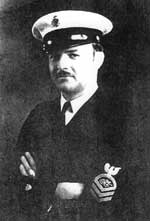
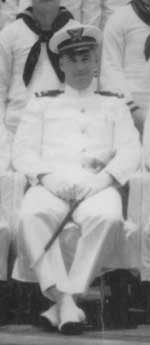 Itasca’s
radio section was comprised of one officer, one non-commissioned officer,
and three enlisted men. The ship’s Communications Officer
was Ensign W. L. Sutter (left). Chief Radioman Leo Bellarts (right)
supervised operators Radioman
3rd Class William Galten, Radioman 3rd Class Thomas O’Hare, and Radioman
3rd Class George Thompson. Radioman 2nd Class Frank Cipriani was borrowed
from another ship and was not officially part of Itasca’s radio
section. On July 2, Cipriani was ashore on Howland Island to operate
the high-frequency direction finder on loan from the Navy.
Itasca’s
radio section was comprised of one officer, one non-commissioned officer,
and three enlisted men. The ship’s Communications Officer
was Ensign W. L. Sutter (left). Chief Radioman Leo Bellarts (right)
supervised operators Radioman
3rd Class William Galten, Radioman 3rd Class Thomas O’Hare, and Radioman
3rd Class George Thompson. Radioman 2nd Class Frank Cipriani was borrowed
from another ship and was not officially part of Itasca’s radio
section. On July 2, Cipriani was ashore on Howland Island to operate
the high-frequency direction finder on loan from the Navy.
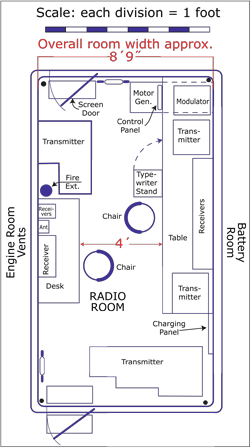 Itasca’s cramped radio room had positions for two operators. Both
were manned during the Earhart flight. At Position #1, O’Hare
was charged with handling all administrative traffic leaving Chief Radioman
Bellarts, at Position #2, free to handle communications to and from Earhart.
Each operator kept his own minute-by-minute log of messages he sent or received.
Itasca’s cramped radio room had positions for two operators. Both
were manned during the Earhart flight. At Position #1, O’Hare
was charged with handling all administrative traffic leaving Chief Radioman
Bellarts, at Position #2, free to handle communications to and from Earhart.
Each operator kept his own minute-by-minute log of messages he sent or received.
During the early morning hours of July 2, 1937, as the Earhart flight drew closer and closer, O’Hare, in addition to keeping routine radio schedules with Coast Guard and Navy stations in Hawaii and California, listened in on the transmissions to and from the plane and, as time permitted, included his own account of the unfolding drama in the log he was keeping. The unintended result was that two separate logs were being kept of messages to and from Earhart.
Shortly after 6:00 a.m., as the sun was coming up, boats set off from the ship carrying the men who would welcome the flight and service the plane. Among them were the two journalists, James Carey of the Associated Press and Howard Hanzlick of the United Press. At 6:15 Earhart reported that she was 200 miles out. At 6:45, reportedly 100 miles out, she asked Itasca to take a bearing on her signals, but the frequency she was using was far too high for Itasca’s direction finder. At 7:18 Bellarts sent her a message saying “Cannot take bearing on 3105 very good. Please send on 500 or do you wish take bearing on us?” There was no reply from Earhart but, on the chance that she might send a signal on 500 kilocycles, Bellarts handed off Position #2 to William Galten and went to the bridge to man the ship’s direction finder. At 7:30 he returned to the radio room, leaving George Thompson in charge of the direction finder on the bridge. Galten continued to man Position #2.
Nearly an hour had passed since the last communication from Earhart when, at 7:42, her voice fairly exploded over the radio room loudspeaker. Galten logged the transmission as, “We must be on you but cannot see you … but gas is running low.” O’Hare heard it somewhat differently and his version portrayed a more desperate situation. “Only ½ hour gas left sez she.” He had the time as 7:40. If O’Hare was right, Earhart expected to run out of fuel at about 8:10.
At 7:58 Earhart asked Itasca to send signals so that she could take a bearing using her radio direction finder. Itasca complied with her request but, at 08:00-03, Galten logged her as saying, “We received your signals but unable to get a minimum. Please take bearing on us and answer 3105 with voice.” Earhart then sent a series of long dashes.
Neither the direction finder aboard Itasca nor the one manned by Cipriani on Howland was able to get a bearing on Earhart’s signals. Nothing more was heard and the supposed fuel exhaustion time of 08:10 came and went with no word from the plane. A few minutes later Itasca’s commanding officer, Commander Warner Thompson, made the decision to recall the shore party in preparation for getting underway to begin searching for the lost flight. The Howland Island radio log shows that the order to return to the ship was received at 08:26 (Itasca time).
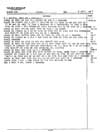 |
Figure 1. |
Up to this point, Itasca had not advised headquarters that Earhart was overdue and presumed down. While the shore party was running to the beach, loading aboard the boats, and heading back to the ship, Galten’s Position #2 log notes that, at 08:44, Chief Radioman Leo Bellarts began tuning up the T-16 transmitter in order to send a message to the Coast Guard’s San Francisco Division (call letters NMC). The log shows that, at 08:45, Galten tried unsuccessfully to call San Francisco. Figure 1 is a reconstruction of what the Position 2 log looked like at that moment.
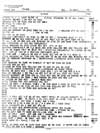 |
Figure 2. |
To try to raise San Francisco, Galten had to stop listening for Earhart. Under the protocols set up by Bellarts, that kind of administrative call should have been handled by O’Hare at Position #1, but O’Hare was apparently not there. As shown in Figure 2, the time notations in the Position #1 log between 0800 and 0908 don’t match the log entries and O’Hare does not appear to have logged anything that happened during that hour. By 0800 he had been at his station without a break for six hours straight. It may be that the combination of hunger, stress and fatigue was too much for him. In any event, Galten made the call to San Francisco and apparently missed a call from Earhart that came in at about the same time.
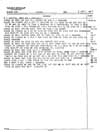 |
Figure 3. |
Having assumed that the plane was down and with search preparations in progress, the call from Earhart came as a complete surprise. Galten was busy trying to raise San Francisco and O’Hare seems to have been out of the room for whatever reason. Others who were there, including Bellarts and LCDR Frank Kenner, did hear Earhart over the radio room loudspeaker and apparently told Galten what she had said. But now Galten had a problem. The log was supposed to be chronological but he needed to log an event that had occurred prior to his most recent (08:45) entry. His solution was to change the times of the two preceding entries, knowing that his alterations would disappear once the log was smoothed.* The 8:44 entry now became 8:42, and the 8:45 entry was changed to 8:43. He logged the Earhart transmission as also having occurred at 08:43. Galten had sacrificed the accuracy of the times of the two preceding entries for the sake of recording the right time for the Earhart message. Figure 3 shows the log as it looked after Galten made those changes.
*As was routine, the radio logs were subsequently re-typed (“smoothed”) to remove errors and strike-overs but, in this case, the cutter’s Chief Radioman, Leo Bellarts, saved the raw log as a souvenir. After his death in 1974, Bellarts’ family donated the log to the National Archives.
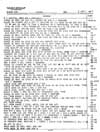 |
Figure 4. |
Galten brought the log current by stating that the events on the next line spanned 0844 to 0846. With the chronology of his log restored, Galten continued to record events as they occurred. Fig. 4 shows the completed page of the radio log. No other times are changed and the log shows an orderly progression of events.
At some later time – just when is uncertain - a further change was made to the Position #2 log. The log shows that yet another message was received from Earhart. Someone, perhaps Galten, perhaps someone else, tried to cram it onto the same line with the 0843 message. Figure 5 is a detail of that part of the log.
 |
| Figure 5. |
The new entry was “(?/KHAQQ XMISION WE ARE RUNNING ON LINE N ES S” which translates as “Questionable KHAQQ transmission, We are running on line north and south.” There wasn’t enough room to get it all on the one line. The first problem was was the need to X-out the 43. Then there wasn’t enough room for the N ES S so that had to go on the line above. To re-enter the 43 the typist had to move the platen down a half space and stick it between the lines.
As shown in Fig. 6, when the Position #2 log was “smoothed” all the X-outs disappeared. Having two events occur at 0843 was a problem so the wandering 43 vanished altogether. Now the log showed an orderly chronology that lumped the two transmissions together as one message that began at 0844.
 Figure 6.
Figure 6.
The question is, when was the “We are running on line north and south” transmission really heard? It was obviously added after the rest of the page had been typed. Otherwise the message could have just been logged in sequence and there would be no need to cram it on the 0843 line. And it’s not just a later elaboration on the 0843 entry, otherwise there would be no need to write KHAQQ XMISION. As with the 0843 message, Galten apparently didn’t hear the transmission himself and only learned about it second-hand when it was too late to log it in its proper sequence.
Given that the alterations to Galten’s log strongly suggest that “We are running on line north and south” was heard after 0843, we must ask if there is any evidence as to when it may have been heard. Yes, there is. Commander Thompson, Associated Press correspondent James Carey, and United Press correspondent Howard Hanzlick all claimed that the last message from Earhart was heard at 8:55.
Neither Carey nor Hanzlick heard the message first-hand. They had both been ashore with the welcoming party and were en route back to the ship until 9:10 , according to the ship’s deck log. Carey’s notebook entry, written sometime later that evening, says, “Aboard ship got news that at 8:55 am (last heard) Earhart was believed to have given a sun line position; however, this without a reference point – presumed to be Howland.” He also jotted notes on the back of an unsent “flash” radio message announcing Earhart’s arrival that he had left with the radio operators. Exactly when he made the notations is not known but it had to have been after he was back aboard ship. The notes say:
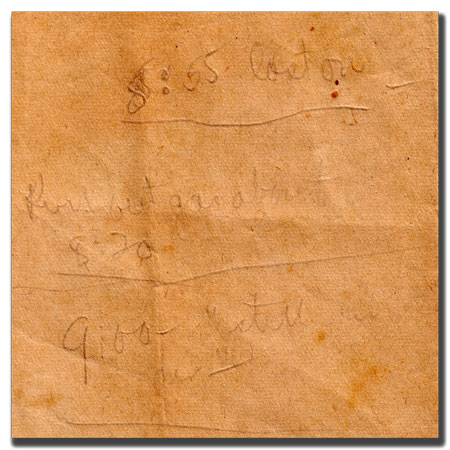
8:55 – last on
Ran out gas about 8:20
9:00 – still on air –
Hanzlick’s notes are reportedly a bit different:
0844 “AE radioed her line of position as 157-337.”0855 “We are running north and south.”
Commander Thompson’s version of events changed over time. At 10:15 a.m. he sent a message to Coast Guard San Francisco Division saying:
“Earhart contact 0742 reported one half hour fuel and no landfall position doubtful contact 0646 reported approximately one hundred miles from Itasca but no relative bearing. 0843 reported line of position 157 dash 337 but no reference point presume Howland.”Note that there is no mention of “running on line north and south.”
At 2:02 p.m. Thompson sent another message to his superiors in San Francisco saying that, “We have had no positions, speed, or courses from Earhart’s plane except so called line of position at 0843 which had no reference point.”
Again, the time is 0843 and there is nothing about running north and south.
But then, at 7:40 p.m. that evening, in another message to San Francisco, Thompson said:
“Itasca contacted Earhart to receive incomplete message on agreed schedules from 0248 to 0855 this morning …
Have heard no signals from Earhart since 0855 this morning when she gave Itasca a line of position believed to mean radio bearing and stated she was running north and south.”
The time of the final message had changed to 8:55 and for the first time came the news that she had said she was running north and south.
At 2:05 p.m. the following afternoon, July 3rd, Thompson sent a nearly identical message to Fleet Airbase, Pearl Harbor.
“Received incomplete messages on agreed schedules from 0248 to 0855 two July…
At 0855 she gave Itasca a line of position 157 337
believed to be radio bearing and stated she was running north and south.”
By 5:20 p.m. that same afternoon, the time of the last message was back
to 08:43. In a message to Secretary of the Treasury, Henry Morgenthau,
Thompson wrote:
“No information Earhart plane since 0843 2 July …”
The next evening, at 7:00 p.m. on July 4, Thompson sent a long and highly inaccurate report listing the times and “exact text” of the messages that had been received from Earhart – and time of the final transmission changed yet again. Now he said
“0844 Earhart called Itasca ‘We are on the line of position 157 dash 337 will repeat this message on 6210 kilocycles we are now running north and south.’”
To summarize, in official messages sent by Itasca’s commanding officer, the time of Earhart’s last in-flight radio transmission changed three times in the space of two days; from 0843, to 0855, back to 0843, and finally to 0844. What could account for such discrepancies? The available historical documents suggest a reasonable sequence of events.
Getting Their Story Straight
When Carey and Hanzlick arrived back aboard Itasca shortly after 9:00 a.m. on July 2nd they were told by someone whose word they trusted, that the last message from Earhart had been heard at 8:55. Carey, in fact, made an additional note that “9:00 - still on air.”
When Commander Thompson composed his messages to San Francisco Division at 10:15 a.m. and at 2:02 p.m., he used as his source the altered log that showed the last message “We are on the line 157 337…” being heard at 0843. The ship’s deck log for the 8 a.m. to noon watch also shows the message time as 0843 and is probably taken from the same source.
By later that afternoon, however, the notion that at 8:55 Earhart had said “We are running on line north and south” was considered credible enough that Commander Thompson included the time and information in his 7:40 p.m. message to headquarters. That was still true at 2:05 p.m. the next afternoon when Thompson gave the same information to Fleet Air Base. However, the 8:55 time was not supported by the log, so when Thompson replied to an inquiry from Secretary of the Treasury Morgenthau just a few hours later, he played it safe and used the 8:43 time.
Sometime during the next 24 hours or so, the Position #2 log was “smoothed” and the “43” disappeared, leaving the impression that the “44-6” at the end of the following line applied to the line above as well. Henceforth, beginning with his message to Secretary Morgenthau at 7:00 p.m. on July 4, Thompson always referred to the last message from Earhart as having occurred at 8:44.
Conclusions
At 08:43 Earhart said, “We are on the line 157 337. Will repeat this message on 6210.”
At 08:55 she said, “We are running on line north and south.”
There may have been a further transmission as late as 09:00.
